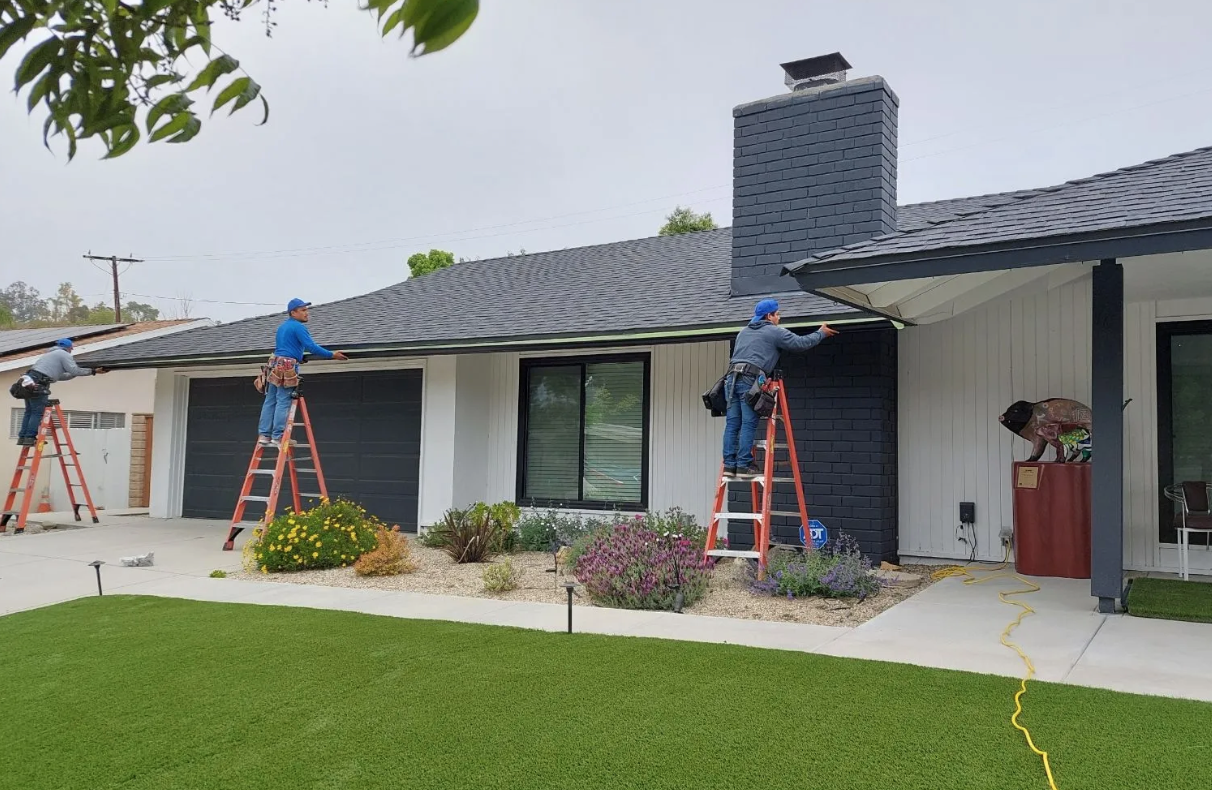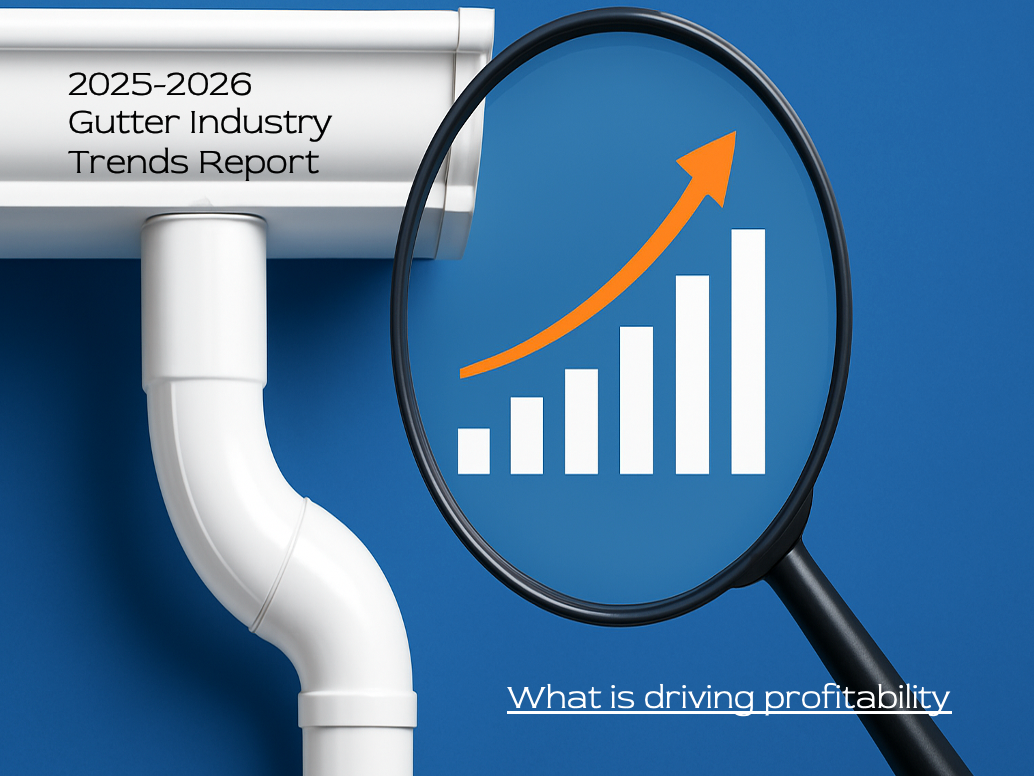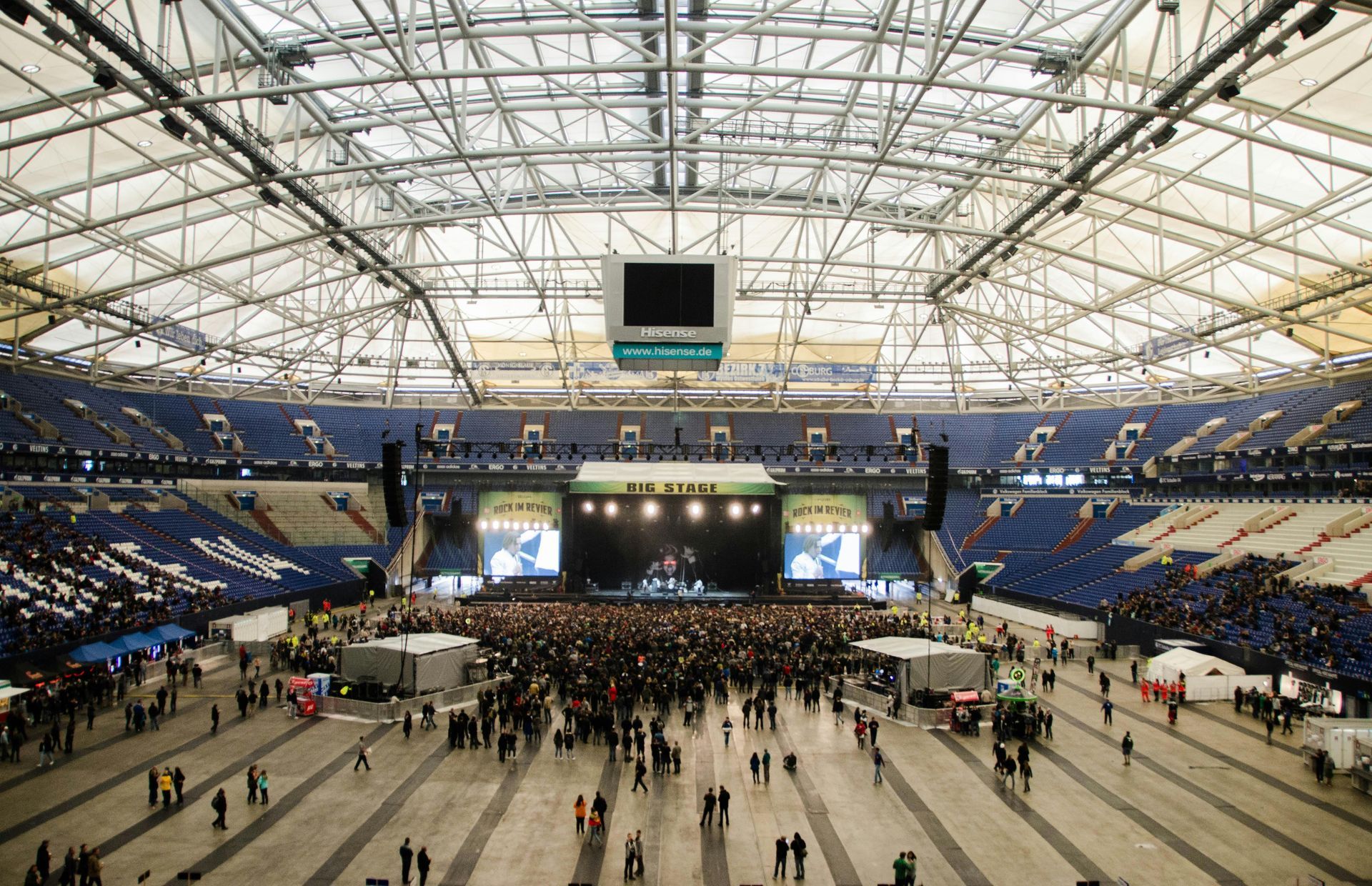The 2025 Home Services Industry Report
What is impacting your home services businesses profitability in 2025
Will Schmidt - December 17, 2024
Executive Summary
The U.S. gutter services market remains a modest but steady niche, with 2025 revenue estimated at roughly
$795 million (up from $778.4 million in 2024). While annual growth is limited (~1–2%), more profound shifts in raw material prices, supply chain complexity, labor costs, and distribution margins are squeezing contractor profits and altering competitive dynamics.
Sections and Topics
- Aluminum versus Steel material dynamics
- Distribution and logistics cost escalation
- Labor (wages, productivity, skilled gap)
- Operational overheads (equipment, vehicles, waste, quality control)
- Margin sensitivity and break-even thresholds
Market & Material Mix Trends

How big is the US Gutter Marketing Industry in 2025?
According to market analysts, the home services sector is on track to grow by 7-10% annually, potentially surpassing $800 billion by the end of 2025. This growth underscores the industry's resilience and ability to adapt to shifting consumer priorities.
Possible tax deductions under the new administration have homeowners dreaming of renovations, home improvements, add-ons, and replacements. Low interest rates and the growing trend of aging homes requiring updates and maintenance bolster investments in these areas.
One of the most notable growth drivers is the demand for sustainable solutions. Consumers are becoming more eco-conscious, seeking materials and services that align with environmental values. This has increased requests for energy-efficient appliances, solar panel installations, and environmentally friendly construction materials.
Technology integration also continues to redefine the industry. Many homeowners no longer consider smart home systems powered by artificial intelligence and the Internet of Things (IoT) optional. Features like smart thermostats, automated lighting, and advanced security systems are in high demand, reflecting a shift toward convenience and efficiency.
Homeowners are now stepping up their technology game, using CRMs, home services software, and digital marketing, making growth, client project management, and online reviews much more manageable.
Trends Shaping the Future

Sustainability and Green Solutions
The push for sustainability is reshaping the landscape of home services. Homeowners are not just seeking cost-effective solutions but also those that align with their environmental values. Service providers who prioritize green practices stand to gain significant competitive advantages. Examples of sustainable practices include the installation of energy-efficient HVAC systems, the use of reclaimed materials, and the incorporation of water-saving technologies like low-flow plumbing systems.
If you’re a gutter company, you may want to consider recycling the aluminum and telling the world that you don’t just dump it in a nearby wasteland but make sure that old gutters become recycled into new gutters.
The benefits extend beyond environmental impact. Businesses that adopt eco-friendly methods often experience cost savings through reduced waste and improved resource efficiency. Moreover, these practices appeal to a broader audience, as eco-conscious consumers are willing to pay a premium for services that reflect their values.
Embracing Technology for Faster Growth and Communications
Technological advancements are revolutionizing the home services industry. The proliferation of smart devices has created opportunities for providers to offer installation, maintenance, and upgrade services tailored to connected homes. Smart thermostats, automated lighting, and integrated home security systems are becoming essential for modern households.
Technology enhances the customer experience and improves operational efficiency. AI-powered scheduling tools and customer relationship management (CRM) systems enable businesses to streamline workflows, manage appointments, and provide personalized service at scale. Companies that leverage these tools are better positioned to meet customer expectations and drive long-term growth.
Why steel is the second best material for gutters
If you can be found in a local search on Google or Bing, you don’t exist. Over 80% of homeowners begin their search for home services online, making local SEO an indispensable strategy. Companies that optimize their Google Business Profiles encourage customer reviews, and implement geo-targeted advertising campaigns with fully SEO-optimized websites will win the monthly lead generation war.
A robust online presence also helps establish credibility. Consumers are more likely to trust businesses with active social media profiles, professional websites, and positive online reviews. By investing in digital marketing, companies can build stronger connections with their target audience and drive sustainable growth.
If you’re not getting the results you need or not doing this at all, join us for a call.
Challenges we faced in 2025

Labor Shortages, Rising Costs, and Getting Squeezed
Labor Shortages
Labor shortages didn’t ease up in 2025 — in fact, they evolved. Even as demand returned in many markets, companies continued struggling to find (and keep) skilled workers. Rising housing costs, insurance premiums, and burnout have made retention harder than ever.
To stay competitive, contractors are offering performance-based incentives tied to metrics that actually move the business forward — like five-star reviews, job referrals, and safety streaks — not just hours worked. Health coverage, retirement options, and flexible scheduling have also become non-negotiable for top talent.
A strong, positive culture is now your best retention tool. Teams that feel appreciated and part of a shared mission stay longer, learn faster, and represent your brand better. In 2025, a loyal workforce is worth more than any new marketing campaign — because replacing skilled labor costs more than ever.
Rising Costs for Supplies and People
Inflation, supply chain disruptions, and rising insurance costs continue to tighten profit margins across the trades. Even essential materials like aluminum, fasteners, and sealants saw double-digit increases this year, forcing contractors to get more strategic.
Successful companies are offsetting these pressures through local sourcing, supplier partnerships, and smarter pricing models — such as tiered service bundles that improve perceived value and encourage larger project commitments.
Others are embracing tech-driven efficiencies — from CRM automation to AI quoting tools — to save time, track expenses in real-time, and preserve profit without sacrificing quality. In 2025, efficiency is no longer optional — it’s survival.
Evaluation of Tariffs on 2025 and 2026

Aluminum and Metal Pricing soars
The full impact of the new Trump-era tariffs will unfold throughout 2026, but one thing is clear — material costs are expected to stay volatile. Contractors who plan ahead and secure bulk or bundled material pricing early in the year will likely avoid major spikes.
If you can afford to stock up now, do it. The next 6–12 months may bring sharp price increases before markets adjust. While the U.S. pushes for more domestic production, it will take time for Mexico, Canada, and Latin American suppliers to relocate or expand manufacturing stateside.
Meanwhile, China-based manufacturers are unlikely to follow suit — meaning supply constraints and higher import costs will remain part of the 2026 landscape.
Aluminum Pricing in 2025-2026
After aluminum and alumina prices climbed sharply in 2024–2025, many contractors saw their margins shrink. Unfortunately, that trend isn’t expected to reverse overnight. Alumina — the key ingredient in aluminum — is projected to remain 25–35% higher than pre-2024 levels, driven by global production costs and shipping constraints.
With Indonesia and China still dominating aluminum exports, tariffs are expected to create short-term cost spikes through mid-2026, followed by a gradual easing as competition and domestic capacity stabilize. The smart move for 2026: lock in contracts early and monitor quarterly supplier adjustments closely.
Steel Prices in 2025-2026
Steel costs may stay unpredictable through much of 2026. After bottoming out below $800 per short ton in late 2024, prices began inching upward again in 2025 due to tariff pressures and rising freight expenses.
As the U.S. and Mexico adapt to the new trade policies, expect temporary price surges for the first half of 2026, particularly in structural and rolled steel products. However, as more North American production comes online later in the year, prices should begin to stabilize.
In short, 2026 will reward preparation and partnerships — companies that negotiate supplier loyalty, forecast inventory needs early, and adapt pricing accordingly will weather tariff turbulence better than those reacting after the fact.
Regulator Changes We endured and face ahead
Regulatory shifts, particularly in areas like ADA compliance, safety standards, and environmental practices, require businesses to stay informed and proactive. Failing to adhere to these regulations can result in fines, legal disputes, and reputational damage. Investing in compliance training and consulting can help companies navigate these challenges effectively.
One quick tip is to have your website add an ADA/WCAG compliance widget to avoid a lawsuit ranging from $1,500 to $150,000. Our agency doesn’t ask customers for it; we require it on every website we build and manage. For only $10-$20 more per month, you safeguard your business and make it easier for people with disabilities to call you and fill out your forms.
Growth Opportunities in 2026

Expanding Service Area Reach
Expanding into new geographic areas is a proven strategy for increasing revenue. Businesses can attract customers in underserved markets companies can attract customers in underserved markets by creating cities. These pages should feature tailored content highlighting services offered in each location, supported by local testimonials and high-quality visuals. Our agency does this when taking on a new client and any time a Client wants to add another city to their territory. Again… if you can’t be found or seen online, your phone won’t ring, and your forms won’t get filled.
Licensing
While most state licenses allow you to practice your trade anywhere, there are city and/or county permits and regulations you need to research. Registration may not be required, or it may cost a pretty penny. Each city and/or county acts independently.
New Location Costs for Expansion
Office or Storage Space: Leasing costs vary widely based on location and size. For a modest office or storage space, expect to pay $3,000 monthly, with complete suites and garages and indoor parking reaching $20,000 or more. If this is a secondary location, start small first and prove there is profitability. Then, you can permanently relocate when new additional cash flows to a larger building.
Monthly Location Costs for Expansion
Utilities such as electricity, internet, and water can add $300 to $1,500 monthly. It can be higher, too, if your square footage begins to climb based on the number of people employed, how many offices are needed, the amount of materials to store, and about 35 other things that’ll have you scratching your head. To simplify it, take your current bills per month total for your location and divide it by your location’s overall square footage. As a starting point, the number should now be multiplied by the square feet in your new building.
Business Fleet Costs
Do you need another vehicle? That's okay. What are the down payment and monthly loan amount? Be aware that most fleet vehicles should cost $25,000 to $50,000. Next, you will need vehicle insurance, which will cost at least $3,000 yearly, if not more.
Marketing Costs
When you open up a new market, you must update your existing website, costing $1,500 or more. You’ll need to create a new Google Business Profile for that new address; that’s about $300. Local SEO and marketing per month will cost $1500 to $3,000, and then you will have to launch Google Ads while local SEO ramps up. The monthly marketing cost to get up and rolling will be $2,000 to $4,000 monthly for at least the first 6 months.
Custom Retention Strategies
Customer retention is more cost effective than acquisition, making it a top priority for service providers. Personalized email campaigns, loyalty programs, and follow-up surveys are powerful tools for maintaining strong customer relationships. Regular communication enhances satisfaction and increases the likelihood of repeat business and referrals.
Diversification
Diversifying service offerings allows businesses to tap into new revenue streams. For example, roofing companies can expand into gutter services, while HVAC could add plumbing into their portfolio. Yes, you will need the experts, which means hiring or acquiring a company, but growth doesn’t come for free. If you want to dominate the home service market, think like Home Depot instead of complaining about their marketing budget.
Growth Opportunities in 2026

Focus on Online Reviews
Online reviews are a cornerstone of modern consumer decision-making. Encouraging satisfied customers to share their experiences on platforms like Google and Facebook can significantly enhance credibility and visibility. Responding to positive and negative reviews demonstrates professionalism and a commitment to customer satisfaction.
Part of our core local marketing services is managing and improving these for you and coaching you on how to get more reviews every month without getting negative reviews or being de-platformed from these vital social media engines that drive visibility and leads.
Invest in Local SEO Optimization
Effective local SEO strategies ensure businesses appear in relevant search results. Consistent NAP (name, address, phone) information across online listings, geo-targeted blog posts, and location-specific keywords must be maintained to improve local rankings.
Leverage Local SEO Data Analytics
A great local SEO and marketing agency will also tell you about your local search trends, not just your rankings. For example, we let our Gutter clients know if gutter cleaning rises versus gutter installation every quarter. Our history tells us that for any industry, when cleanings or repairs are up instead of replacements, it’s a time of high inflation or market volatility. This allows the home industry company to take on lower-profit jobs, stay busy, and build online reviews and future more significant customer projects or referrals.
Final Thoughts
Our client's all stated that 2025 was the most confusing year they've ever been in business. With the changes to search engines, AI, and yet they still state they are seeing 2-5% annual growth. If you are not seeing growth, please consider booking a consult with us to see if we can help you grow for pennies on the dollar through strategic AI contractor marketing.
About the author
Will Schmidt
Will Schmidt, Founder and Owner of Talents Into Profits (TIP), has helped over 150 businesses across 17 different industries, including home services, healthcare, and SaaS, generating more than $11 billion in lifetime sales. His experience in providing branding, marketing, websites, and lead generation based on operational capacities has enabled his clients to continually see 20-50x monthly ROI for services rendered.
Subscribe to Blog
Sign up to get industry insights, trends, and more in your inbox.
Contact Us
We will get back to you as soon as possible.
Please try again later.
Book Free Consult
Join me for a 30-45 minute call to review how to grow your contractor business faster, more affordably, and easier.
SHARE THIS











